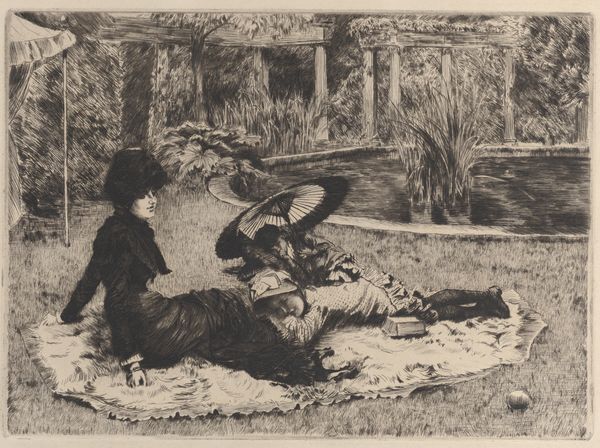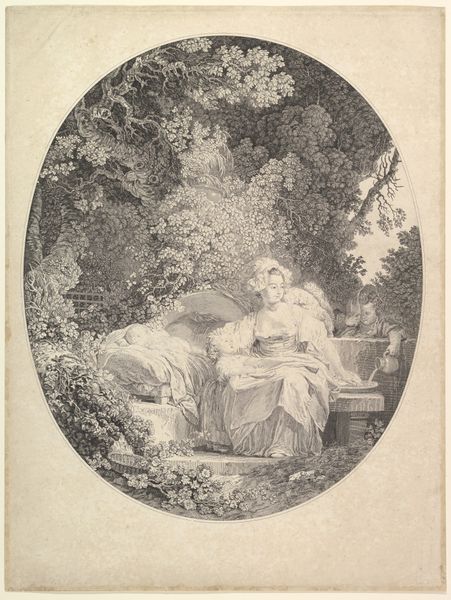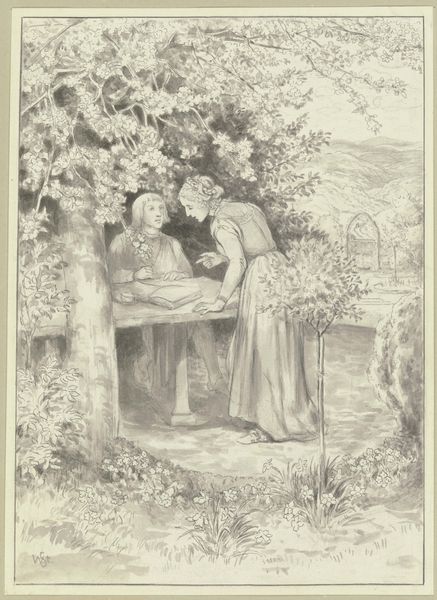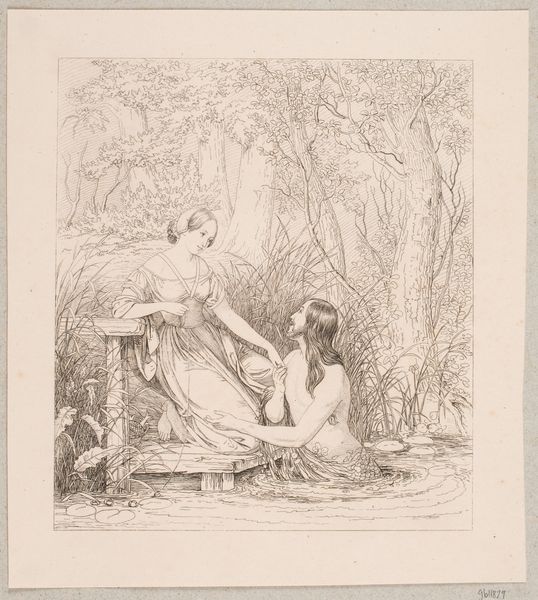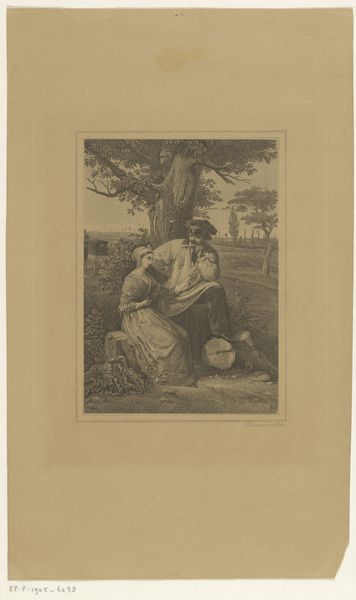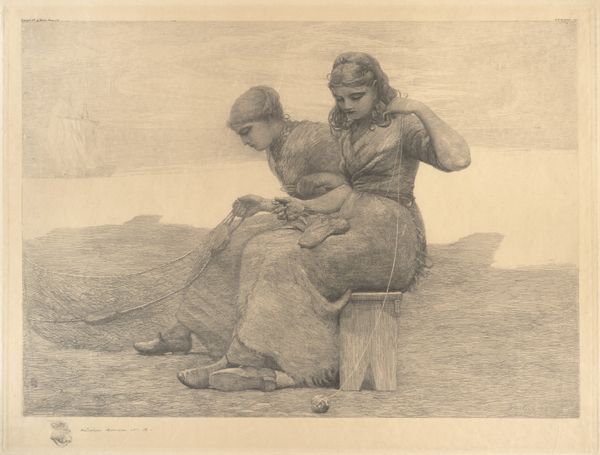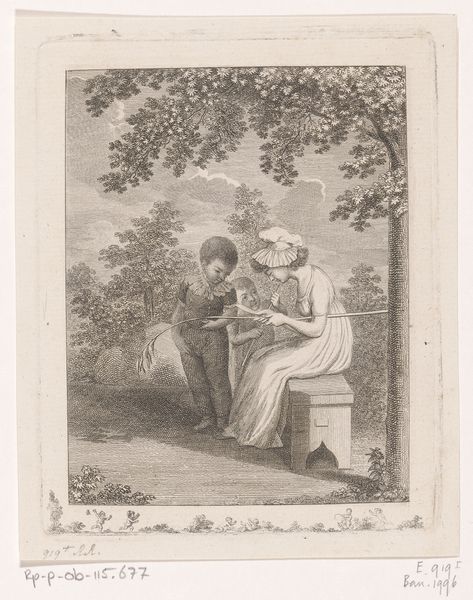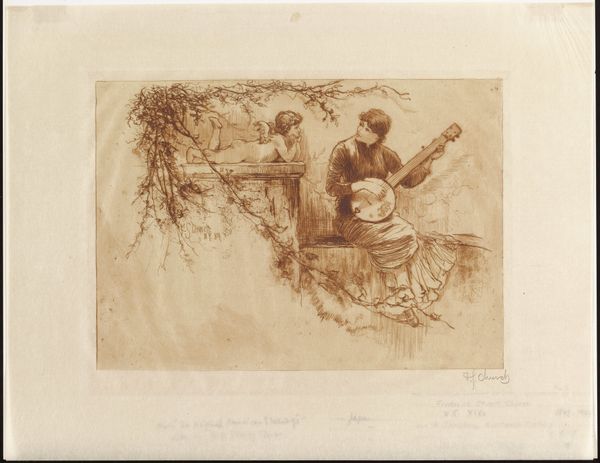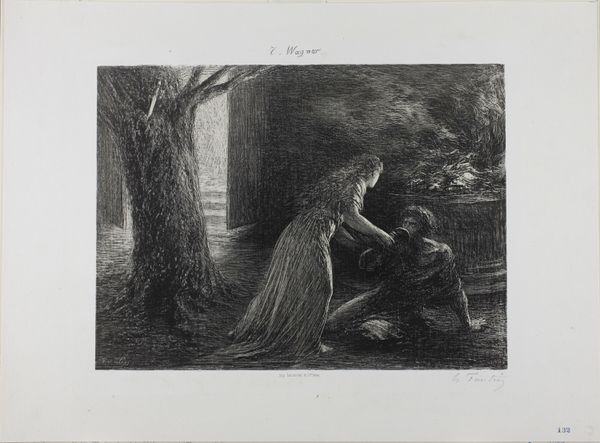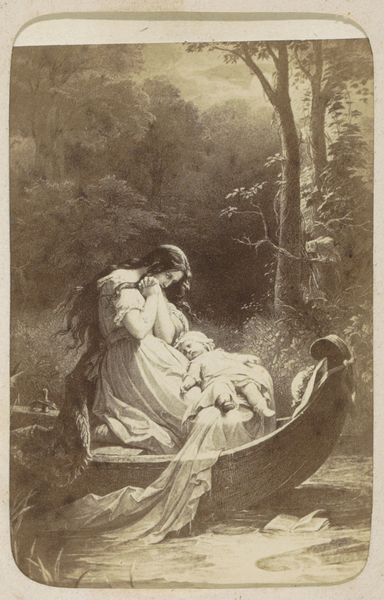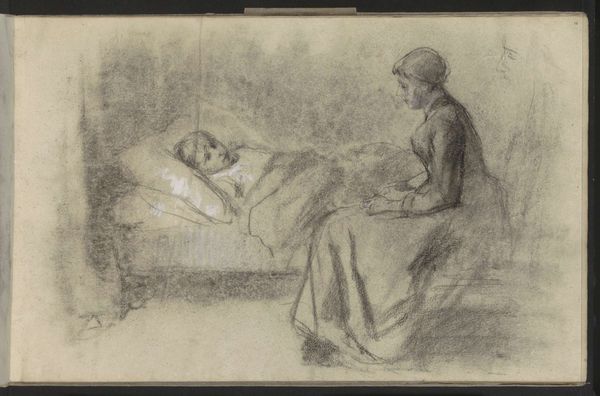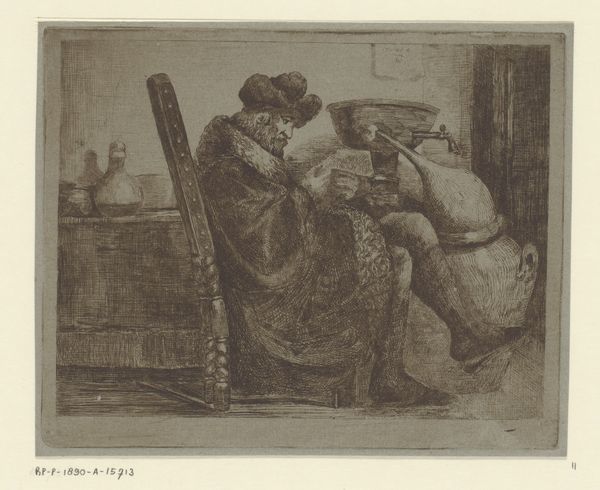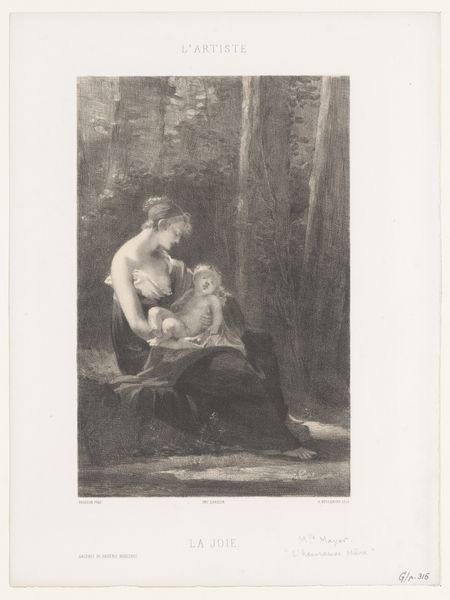
Dimensions: 24 x 30 in. (60.96 x 76.2 cm) (image)27 1/16 x 34 1/2 in. (68.74 x 87.63 cm) (sheet)
Copyright: Public Domain
Curator: Eastman Johnson created this graphite-on-paper drawing in 1867. It’s titled “The Letter Home” and resides here at the Minneapolis Institute of Art. What are your initial thoughts? Editor: A profound quiet settles over me. The muted tones emphasize the tenderness of the scene. There's a somber weight to the subject that really affects its atmosphere, the gradations achieved through graphite rendering every detail carefully. Curator: Notice how the woman sits upright, almost formally, yet her gaze is entirely focused on the man. This harkens back to the artistic convention of idealized woman, prevalent during wartime—an image of feminine care and steadfastness meant to rally support for soldiers. She is the home front, a guardian. Editor: Absolutely. Semiotically, she represents stability. And consider the formal elements reinforcing this, her verticality contrasting with the horizontal plane of the ailing soldier in his cot. It subtly directs the viewers’ attention through dynamic lines to different ideas about duty, illness, love and service to country. Curator: The very act of writing embodies the attempt to bridge distances, physical and emotional. Letters served as lifelines between soldiers and loved ones, imbued with hopes, fears, and anxieties. This act connects the immediate pain with a wider emotional community— the importance of shared identity in a world transformed by war. Editor: Look closer, though, at the almost blurred definition between her and the landscape that encircles her. The edges of the foliage create a visual barrier that accentuates both vulnerability and strength: vulnerability of the man as subject but then strength because it shows that this image and, by extension this message, will pass any obstacle that crosses its path. Curator: Perhaps Johnson sought to depict more than a simple narrative. By positioning this domestic scene within a landscape touched by war—tents faintly visible in the background, and the general pallor around it all-- he prompts viewers to meditate on the multifaceted human cost of conflict. Editor: Exactly, and even how the technique and chosen medium reflects its social significance— a graphite-on-paper drawing makes it accessible to more than paintings in oil could, making it available to an audience far more interested in the messages depicted than something simply decorative or extravagant. It is as much art as it is artefact! Curator: "The Letter Home" is an insightful example of how art becomes a vessel to store and transmit cultural memory through relatable experiences. Editor: Indeed, seeing these sharp compositional strategies interwoven in art opens up entirely fresh possibilities and associations for contemporary reflection!
Comments
minneapolisinstituteofart over 1 year ago
⋮
This drawing is a study for the painting The Letter Home, 1867, at the Museum of Fine Arts, Boston. The nurse is a portrait of Mrs. May, Johnson's sister and wife of Rev. Joseph May of Philadelphia. In a letter from Eastman's wife, Elizabeth Johnson, she suggests that "Camp Hospital at Gettysburg" is the original title. Set in the original wooden frame and bearing medals from the American Sanitary Commission.
Join the conversation
Join millions of artists and users on Artera today and experience the ultimate creative platform.
